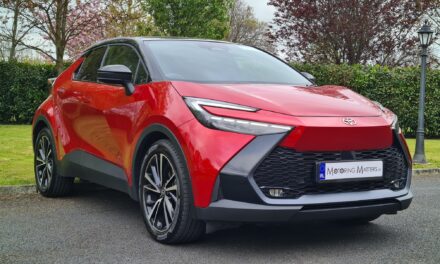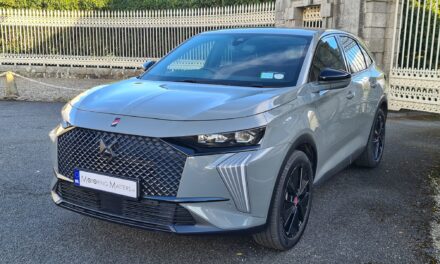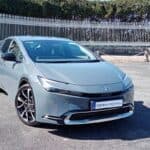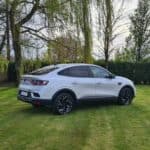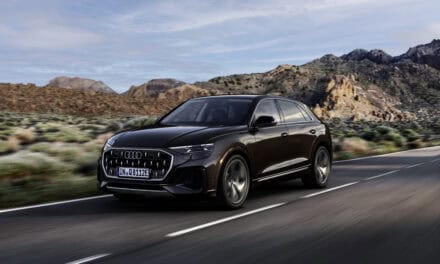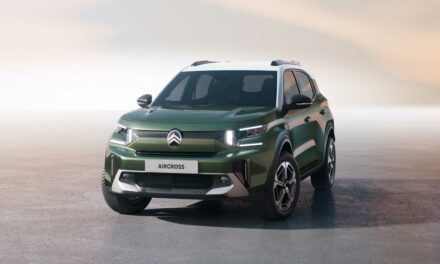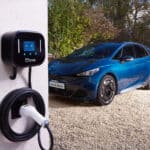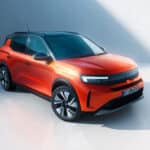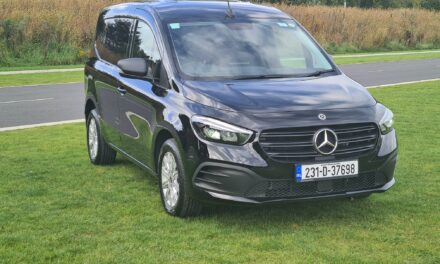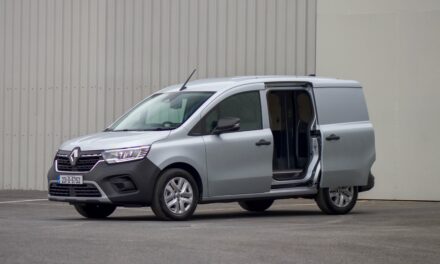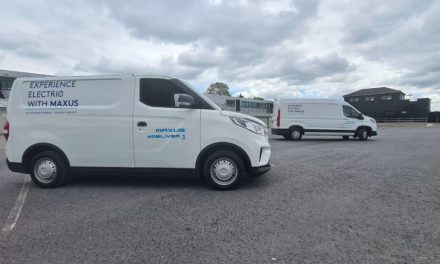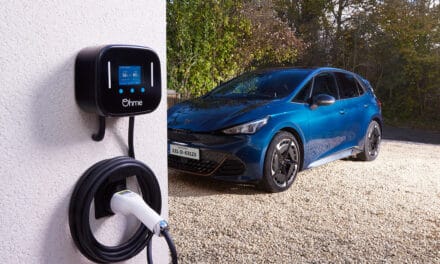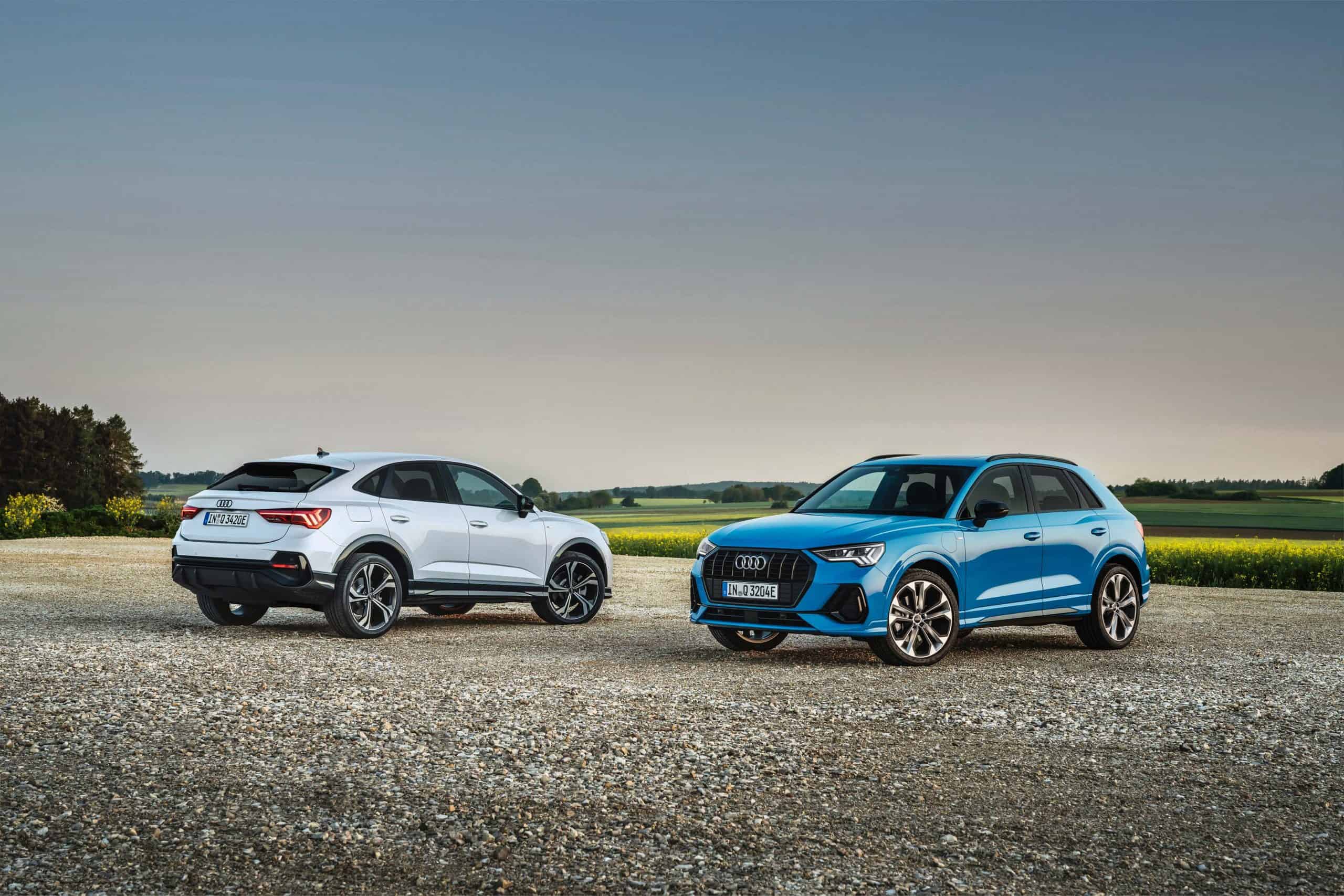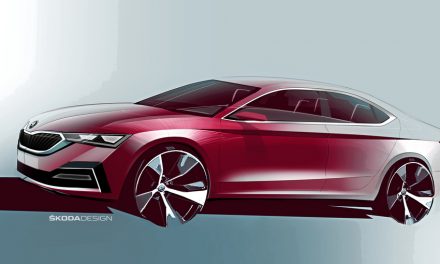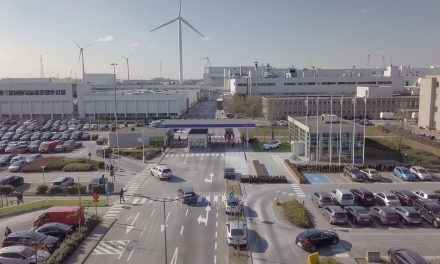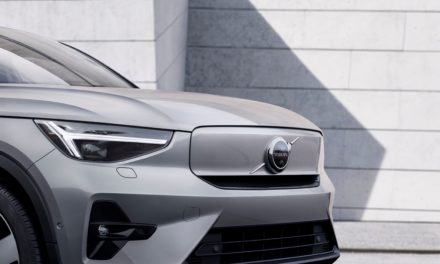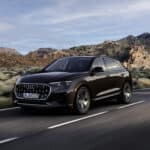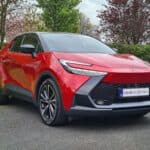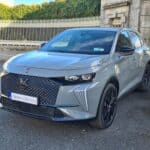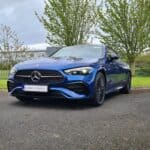
The Audi Q3 as a Plug-in Hybrid – Full Details Revealed.
The Audi Q3 as a Plug-in Hybrid – Full Details Revealed.
Audi continues its electrification campaign: Presales of the Q3 45 TFSI e and the Q3 Sportback 45 TFSI e will start in the second week of January (Q3 45 TFSI e1; Q3 Sportback 45 TFSI e2). The plug-in hybrid drive installed in both models delivers a system output of 180 kW (245 HP), and both compact SUVs can cover a distance of up to 61 km in the NEDC powered purely by electricity. In the WLTP, the distance is 51 km for the Q3 45 TFSI e and 50 km for the Q3 Sportback 45 TFSI e.
The combination of an electric driving experience, simple charging, and high level of suitability for everyday use makes Audi’s plug-in hybrid models especially appealing. The Q3 45 TFSI e and the Q3 Sportback 45 TFSI e complete the range of plug-in hybrids that Audi has brought onto the market since the middle of 2019. At the same time, these two compact SUVs mark the first step into the world of electrified Q models.
245 HP of system output, 13 kWh of energy capacity:
The two Q3 models both include a 1.4 TFSI as the combustion engine. This four-cylinder engine delivers 110 kW (150 HP). The drive is completed by a permanently excited synchronous machine (PSM), which provides 85 KW of power. The PSM is integrated in the housing of the six-speed S tronic together with the separating clutch. This dual-clutch transmission, which transfers the power to the front wheels, integrates an electric oil pump. This ensures the supply and thus the function of the clutches and with that the gear selection even when the TFSI engine is switched off.
Great driving pleasure and high efficiency – the powertrain of these two new models offers both. The 1.4 TFSI and the electric motor together generate 180 kW of system output (245 HP) and system torque of 400 Nm. Both the Q3 45 TFSI e and the Sportback take 7.3 seconds to burst from 0 to 100 km/h, and both reach a top speed of 210 km/h. In the New European Driving Cycle (NEDC), the consumption of the Q3 45 TFSI e is 1.7 to 1.4 litres of fuel per 100 km (39 to 32 grams of CO2. The Q3 Sportback 45 TFSI e records the same values of 1.7 to 1.4 litres of fuel per 100 km (38 to 33 grams of CO2). The total range achieved by both models is approximately 710 km – testifying to their great suitability for everyday use.
The high-voltage battery is located under the vehicle floor in front of the rear axle. Its 96 prismatic cells store 13.0 kWh of energy. It owes this high value to the compact and relatively lightweight battery of a new cell generation. The battery system has its own cooling circuit, which can be coupled to the air conditioning system’s circuit to ensure effective cooling even when requirements are at their highest.
Focus on efficiency: the drive management system;
The drive management system of the compact SUV models is designed for high efficiency. Except in extremely cold conditions, the SUVs are always started in electric mode. Both plug-in models can cover up to 61 km with zero local emissions in the NEDC (51 km for the Q3 and 50 km for the Q3 Sportback in the WLTP). The maximum speed they can be driven at here is 140 km/h. At low speeds, the AVAS (Acoustic Vehicle Alert System) generates the legally prescribed e-sound to warn other road users.
In “Auto-Hybrid” mode, the main operating mode, the drive management system divides the tasks between the 1.4 TFSI and the electric motor intelligently and efficiently. The electric motor supports the four-cylinder engine in many situations, for example when passing. When accelerating from low rotational speeds, for example, it applies the high torque that it generates due to its operating principle to bridge the few tenths of a second that the turbocharger needs to build up pressure – its deployment is imperceptible, but efficient. Drivers can prioritise electric drive with the EV button. The drive management system constantly evaluates numerous data points, including the route information from the optional navigation system and the data about the near surroundings from the vehicle sensors. This allows it to identify when the car is approaching a town sign, a speed limit or a roundabout, or getting too close to the vehicle ahead. When the foot is taken off the accelerator, the Audi Q3 45 TFSI e and the Q3 Sportback 45 TFSI e start to coast with the TFSI engine switched off in most situations.
The right mode for the right requirements: “Hold”, “Charge” and dynamic;
Regardless of the intelligence of the drive management system, the driver always remains in control. By pushing the EV button, they can switch between auto hybrid and electric-powered driving, while a menu opens in the MMI operating system at the same time that offers two additional special driving modes: “Battery Hold” and “Battery Charge”. These serve to keep the battery charge at the current level or to increase the state of charge. What’s more, the driver can influence the character of the drive using the Audi drive select dynamic handling system. By selecting the dynamic profile here, setting the S tronic to “S”, and flooring the accelerator, they get the full torque of the electric motor of 330 Nm available to them for up to 10 seconds. As soon as they take their foot of the accelerator, the electric motor switches to recuperation and recovers energy in generator mode. In this way, the vehicle can also decelerate quickly thanks to its electric motor.
Irrespective of the driving profile, both models always recuperate when the driver steps on the brakes. Up to around 0.3 g – i.e. in the vast majority of brake operations in everyday driving – the electric motor performs the deceleration alone. It is only when the brake pedal is applied more heavily that the hydraulic wheel brakes come into play, activated by an electric brake servo. Thanks to the precise blending, the transition is practically undetectable, and the recuperation remains active. During braking, the system can recover up to 40 kW of power through the electric motor and store this in the battery.
With its balanced character, the suspension of the compact SUVs provides an excellent partner for the drive. The standard Audi drive select system adds even more facets to the driving experience – as it accesses not only the engines but also systems such as S tronic and power steering. In addition to dynamic mode, it also offers the comfort, auto, and individual profiles. The two plug-in hybrids drive on 18inch alloy wheels as standard, but wheels, 19 and 20 inches in diameter are also available as options. The body of these SUVs is 10 mm higher than that of the Q3 models with conventional drive systems – which means the ground clearance remains the same despite the cover plate for the battery.
Fully charged in 3 h 45 min: charging at home and on the go;
The Audi Q3 45 TFSI e and the Q3 Sportback 45 TFSI e can be charged using alternating current (AC) at a 400 V socket with an output of 3.6 kW. An empty battery can be recharged in 3 h 45 min using the standard power charging cable in this way. The free myAudi app allows the customer to control the charging, the timer and the pre-entry climate control remotely from their smartphone. The e-tron Charging Service, which covers the majority of countries in Europe, offers great convenience: With a single card, the customer gains access to more than 155,000 charging points.
Sporty and versatile: design and interior;
Both the new Q3 models impress with a powerful and sporty stance on the road. The interior is generous and variable. The front seats offer excellent comfort and a sporty seating position. The rear seats can be moved lengthwise as standard; their backrests are divided into three sections and recline at seven different angles. The luggage compartment has a basic volume of 380 l, which increases to 1,375 l in the Q3 45 TFSI e and 1,250 l in the Q3 Sportback 45 TFSI e when the seats are folded down. As an option, an electric tailgate is also fitted to the vehicle as standard.
Two displays form the basis of the operating and display concept. The MMI touch with a 10.1 inch screen takes up a central position in the instrument panel and displays the energy flows of the hybrid drive and more. The standard digital instrument cluster includes a powermeter which displays the system’s output, the status of the drive, the recuperation, the battery’s state of charge, and the range. Many functions can be operated through a natural-language voice control as a further input level, which also offers the option of accessing the knowledge of the cloud.
The driver assist systems come from the premium class. They include the adaptive cruise assist (optional), which assists the driver with longitudinal and lateral control – substantially enhancing comfort on long journeys in particular. In order to maintain lateral guidance, the driver needs to apply just a gentle touch to the capacitive steering wheel, which is part of the system, to prove that they are paying attention. The Audi pre sense basic, Audi pre sense front, Audi side assist, and lane departure warning come as standard.
The Audi Q3 TFSI e and Audi Q3 Sportback TFSI e will arrive into dealerships in Spring 2021.

